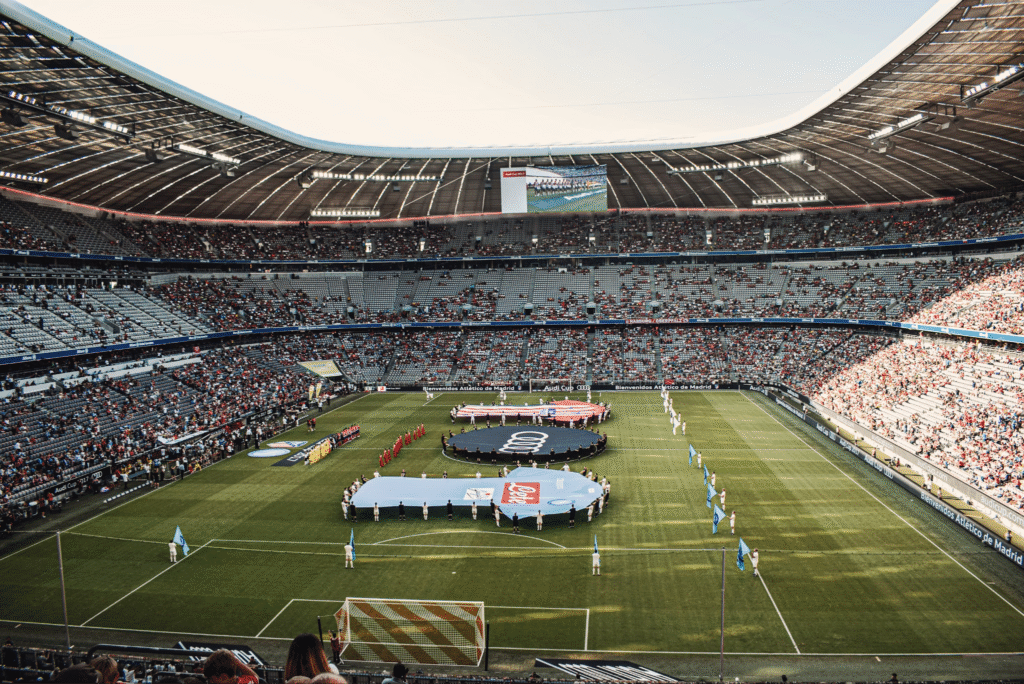Two rounds into the league phase, the table shows a clean headline: Inter and Arsenal sit on six points from two matches, each with a solid goal split and no late collapses. Match tempo looks controlled, margins look mature, and squad choices suggest planned rotation rather than improvisation. Early perfection does not seal qualification, yet it builds leverage for the seed lines that follow.
Supporters and analysts now mix official fixtures, club pages, and broadcast rundowns to shape expectations for October. Many track momentum swings with the lucky7 betting app, using odds movement as a quick proxy for fitness news and schedule stress. The habit is simple: check the live table, scan kickoff windows, then compare implied probabilities to style matchups before the next midweek.
League Phase Snapshot
Inter’s baseline reads as compact shape, vertical release, and set-piece clarity. Interventions in transition remain decisive, with first contact on long balls reducing second-phase chaos. Arsenal’s rhythm emphasizes structured press triggers, wide overloads, and clean entries into the box. Both clubs display trust in build-out patterns, limiting risky passes through congested zones and converting possession into high-value entries rather than volume for its own sake.
October brings compressed travel and an opponent variety. Inter faces a high-work-rate test that rewards calm progression through pressure. Arsenal prepares for a disciplined defensive block that punishes sloppy spacing. In an eight-game phase, the useful target is not fireworks; the useful target is repeatable one-goal control.
Key signals from the official hubs
- Points and goal difference align with controlled game states, not shootouts.
- Upcoming fixtures compress quality, turning Matchday 3 into a seeding hinge.
- Club pages show continuity in core XI choices, enabling consistent press timing.
- Format breadth raises the value of rotation discipline and set-piece variety.
- Early shot maps tilt toward high-value zones rather than low-yield volume.
Inter’s Operating Picture
Inter’s possession plan keeps overloads modest and distances short. Fullbacks advance on cues, not impulses. The front unit alternates hold-up control with third-player runs that pull markers off the lane. Set plays serve as a pressure valve, turning stale phases into restarts that reset spacing. When scorelines tilt in Inter’s favor, tempo management becomes the engine: longer touches, controlled throw-ins, and safe restarts that squeeze the clock without inviting pressure.
Risk control shows in the turnover profile. Central giveaways are rare, and long diagonals arrive after shape is set, not during transitions. The payoff is emotional stability: few rushes, few scrambles, more matches decided on planned sequences instead of random ricochets. In a league phase, stacking that kind of low-noise result matters more than single-night highlights.
Arsenal’s Operating Picture
Arsenal’s progression emphasizes clean exits from the first line and rapid occupation of half-spaces. Midfield pivots set the metronome, while wide rotations test backlines that prefer to stay narrow. On restarts, variety improves conversion: near-post flicks, delayed runners, and decoy screens reduce predictability. When protecting leads, Arsenal keeps width honest to prevent cheap turnovers at the touchline, then uses controlled switches to drain pressing energy.
Defensive transitions hinge on the first trap. Ball-side pressure closes quickly, while the far side positions for intercepts rather than aggressive bites. The result is a modest foul count and a limited number of free-kick giveaways in dangerous zones. That restraint converts into cleaner endings, fewer chaotic stoppage-times, and, as the table shows, two tidy wins.
NBC Focus For Matchday 3
Broadcast breakdowns frame the next two rounds as a sorting window rather than a verdict. The narrative centers on schedule compression, travel management, and seeding implications. A perfect start is not a cushion; it is bargaining power for the draw that follows. Coverage also stresses squad depth, with attention on benches that can hold tempo when stars rest.
Between October and early November, injuries and micro-rotations become the hidden variables. The clubs that maintain rhythm while swapping parts gain an edge that does not show immediately in highlights but appears in consistent expected-goal control and reduced transition exposure.
Metrics to watch in the next window
- Median seconds from kickoff to first meaningful entry, a proxy for planned on-ramps.
- Set-piece expected value per match, reflecting variety and rehearsal quality.
- Turnover locations by quadrant, indicating risk management under pressure.
- Shot value mix, showing preference for high-quality entries over hopeful volume.
- Substitution impact within ten minutes, measuring bench readiness and scheme fit.
Bottom Line
Six points from two matches deliver clarity without complacency. Inter shows practiced control in low-event games, while Arsenal displays structured pressure and disciplined circulation. The league phase rewards breadth: opponent variety, travel miles, and rotating roles. Official pages and broadcast rundowns map that landscape in real time, and smart dashboards turn those feeds into a steady rhythm of preparation. Protect the platform now, bank seeding leverage soon, and keep the calendar from dictating the story.
